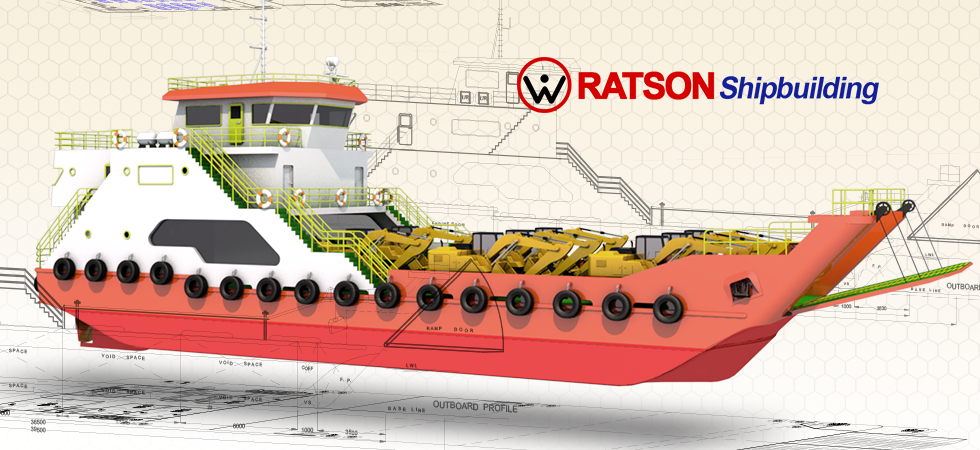
Just like any other construction procedure, the shipbuilding process also needs a drawing. The most used drawing in a shipbuilding world is called general arrangement. This general arrangement is one of the must-have documents in order to build a vessel, trading vessel, or repair purposes. In general, shipbuilding drawing consists of 25 drawings which as follows:
1. Bilge, GS, and FW Piping.
2. Electric one line diagram.
3. Engine foundation.
4. Fuel oil and engine cooling system.
5. General arrangement.
6. Lines plan.
7. Midship section.
8. MSD-diagram.
9. Rudder arrangement.
10. Sounding, filling, air pipe.
11. Stern tube and Propeller Shaft
12. Afterpeak construction.
13. CO2 suppression system.
14. Rampdoor construction.
15. Forepeak construction.
16. Layout engine space.
17. Shell expansion.
18. Super structure.
19. Transverse Bulkhead.
20. Profile construction.
21. Safety plan.
22. SKEG construction.
23. SW/ Cooling system.
24. Fresh water system.
25. Wiring diagram.
The architect in the shipbuilding industry is called a naval architect. Since there are so many drawings required to build a vessel, the drawing work is often done by a team consist of 5 or more people with their own specialization. At first, the naval architect will draw a preliminary general arrangement (Pre-GA) based on the client’s request. Pre-GA is less detail compared to the general arrangement which makes it easier to modify and revised if there are any changes based on the client’s request. After the buyer agrees with the pre-GA drawing, then the naval architects will move to draw the general arrangement and other drawings.
Shipbuilding drawing needs to get approval from classification. The classification job is to ensure that every vessel build is actually built with the same standard and comply with the existing rule for safety and seaworthiness of the vessel. There is 2 classification which is a local class and international class. Indonesia's local class is Biro Klasifikasi Indonesia (BKI) and it only complies with the rules in Indonesia territory. Meanwhile, International class rule is accepted in all countries. Naval architect job is to draw all the shipbuilding drawing based on the class rule and do the revisions until the design are approved.
Indonesia's phenomenon is a little bit different from other countries. In Indonesia, the shipyard can build a vessel based on the drawing that is not being approved by class, this kind of vessel usually named a non-class a vessel which means that they are built without the quality control from any class. Furthermore, since the class rule is to keep updated, a shipyard should repeat the drawing approval process to classification whenever they plan to build a vessel. Because of this reason, many shipyards chooses to use their old design and build the vessel in order to save money. The cost of drawing a complete shipbuilding drawing is ranging from 50 million rupiahs to hundreds of rupiahs. On the other hand, the shipyard can choose to build more than 1 vessel using the approved design to save the cost from drawing. However, it is still debatable because most of the vessel is designed and customized based on the different needs of the buyer. Therefore, not many shipyards dare to build many vessels from one design just to save cost from the shipbuilding drawing.
Dredgers are important machines used for excavation and land reclamation in water bodies. They come in different shapes, sizes, and types, depending on the specific purpose they are designed for. I....
Pilot boats play a vital role in ensuring the safety and efficiency of maritime transportation. These boats are designed to transport pilots to and from ships that require their expertise in navig....
Self-propelled barges are vessels that are designed to transport large quantities of cargo on inland waterways. These barges are propelled by their own engines, making them highly efficient and cos....
Barge/ Dumb Barge A barge is a flat-bottomed boat that is designed to transport goods or people on inland waterways or near-shore locations. Dumb barges, also known as unpowered barges, are t....